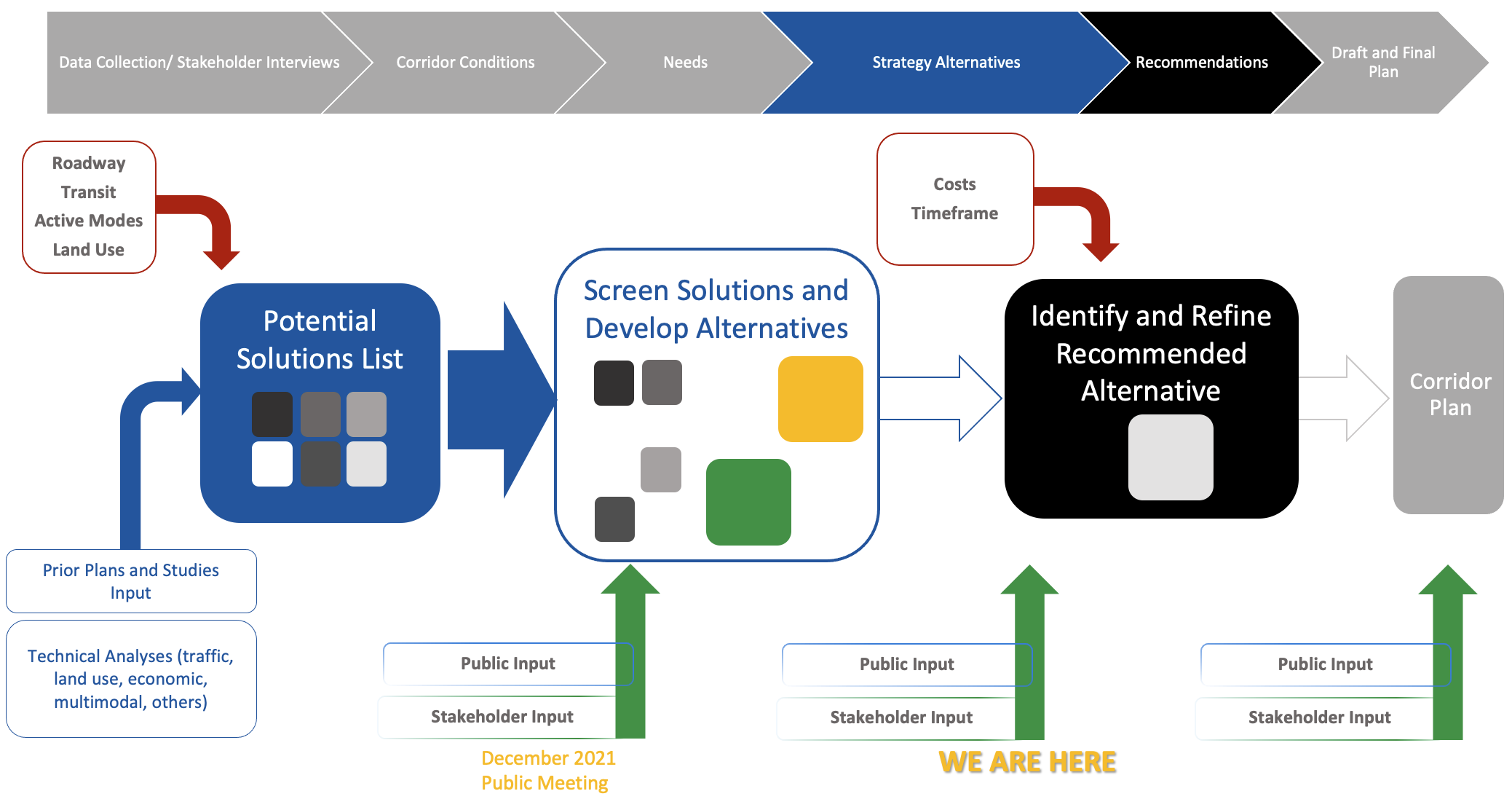



Plan Purpose


Regional
Mode Specific
Area & Neighborhood
Policy Plans
Community Building Diagnostics

-
PlanCOS Themes
-
Planned development and future land use
-
Relevant policy and code
-
Competitive analysis of peer cities
How does Transportation Serve These Big Ideas?
Required Project Outcomes
Data Driven Process
Identify needs and priorities for a 25-year planning horizon
Project list for potential PPRTA ballot initiative
Organizational and policy recommendations
Technology trends
Updated Major Thoroughfares Plan

Mobility Goal Framework
Create a transportation system that is more:




Safe
Equitable
Sustainable
Efficiently Reliable
Accessible
Connected
State of the System Analysis
-
Technical Analysis
-
Public Input
State of the
System Analysis
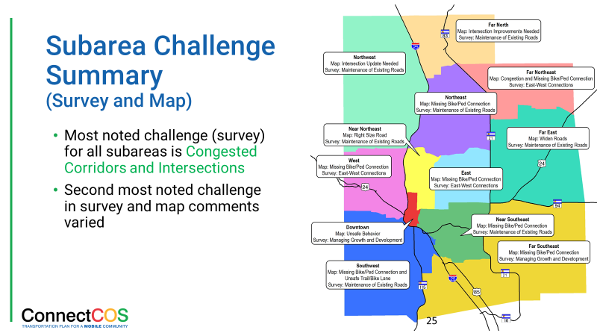
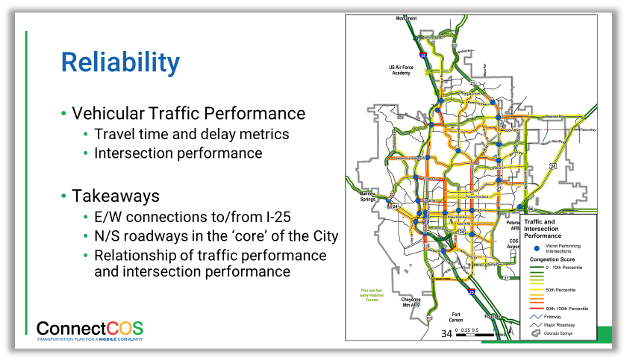
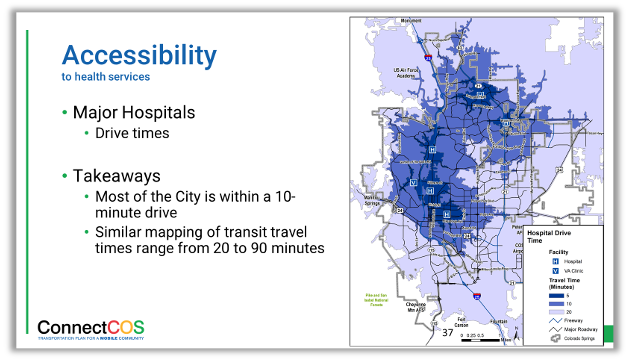
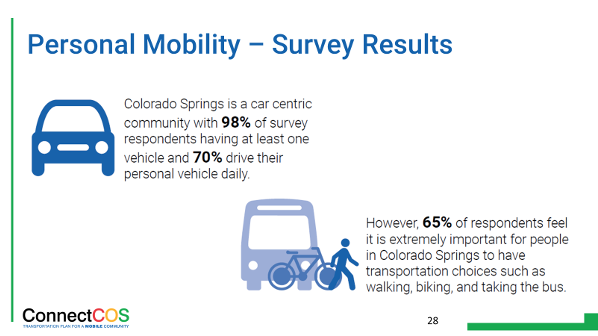
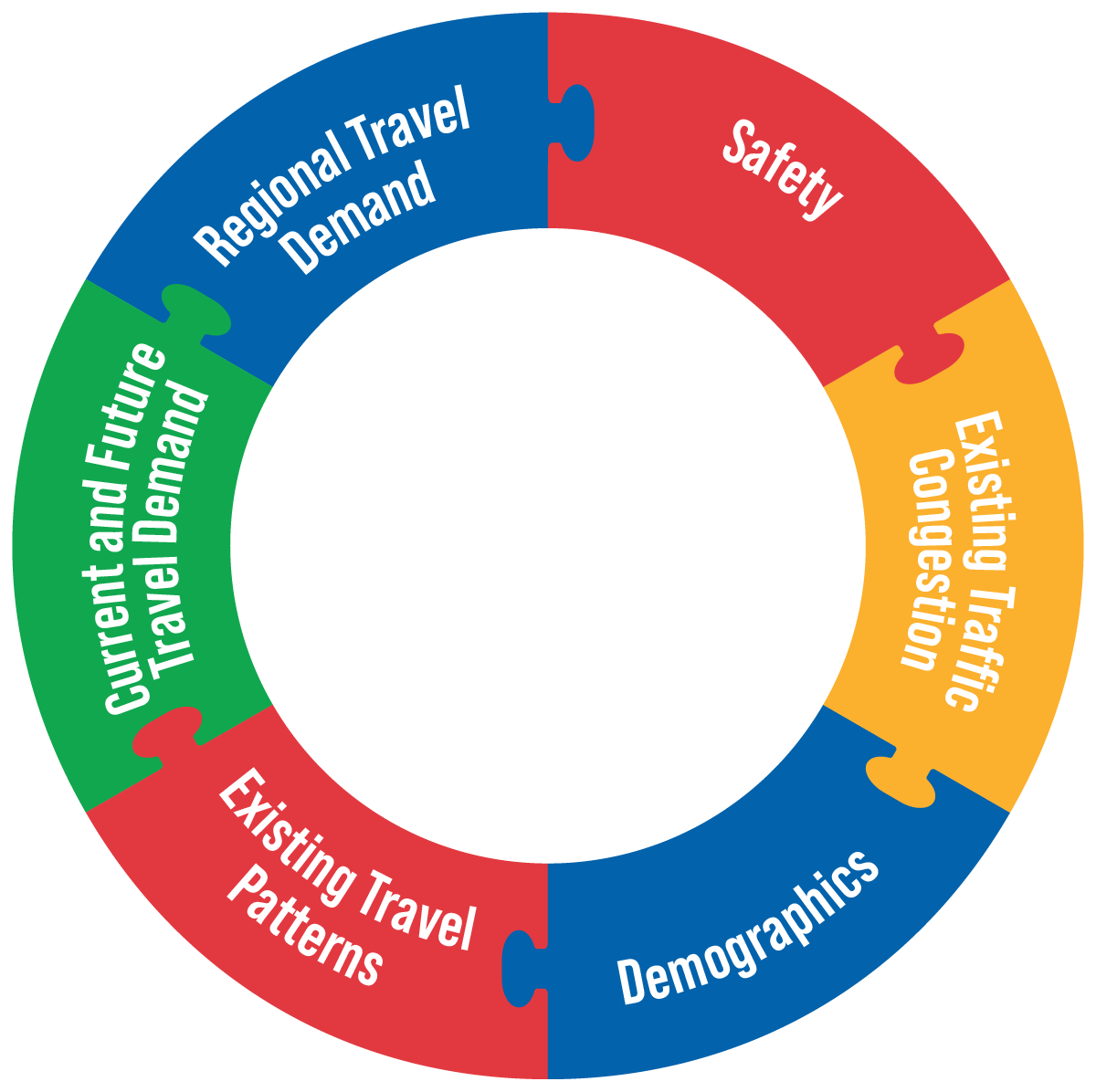

Safety
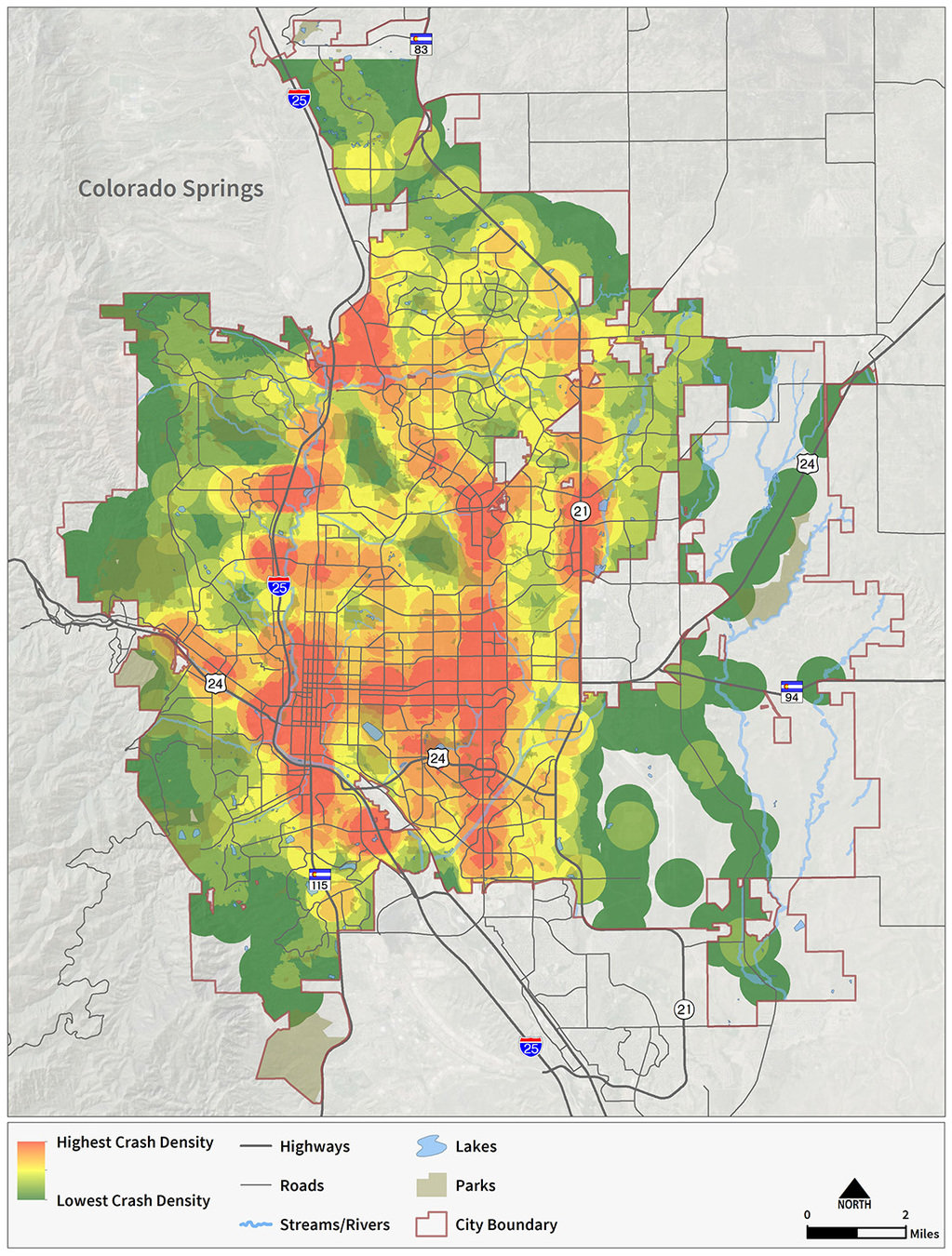
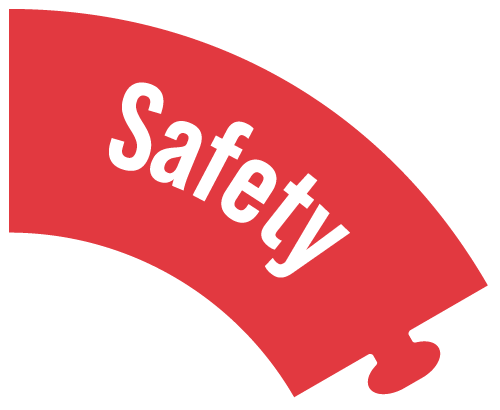
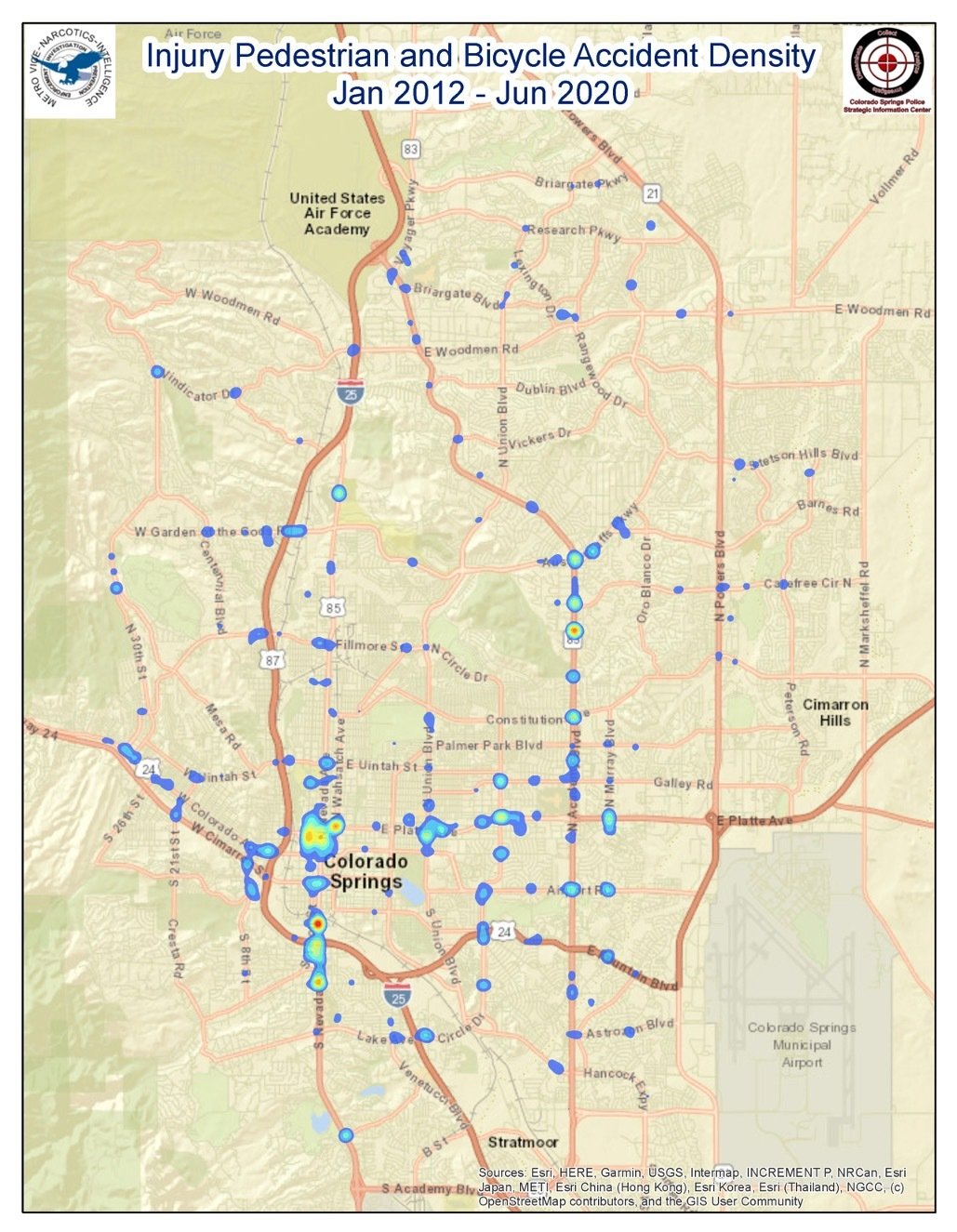
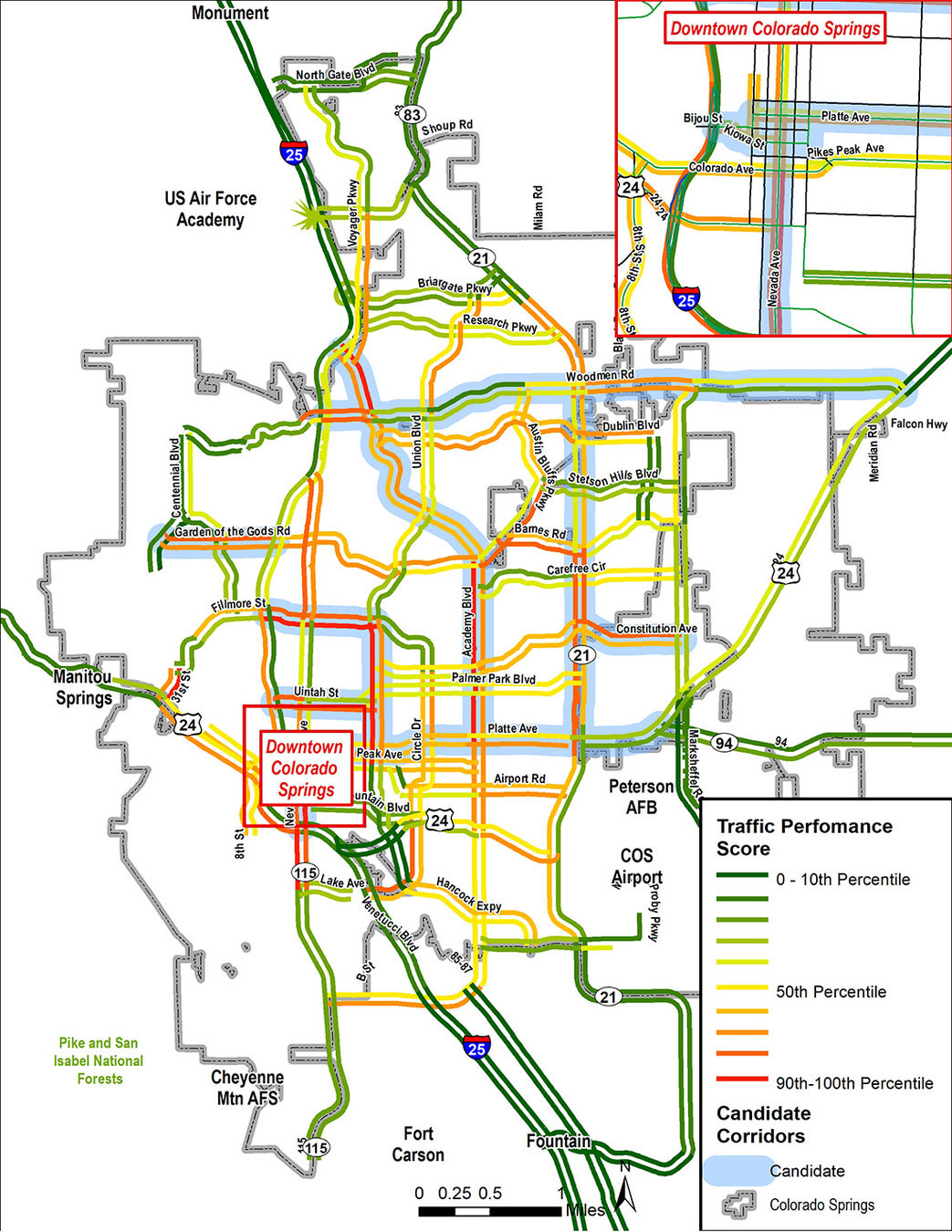
Existing Traffic Congestion
- Travel Time
- Vehicle Delay
- Intersection Performance
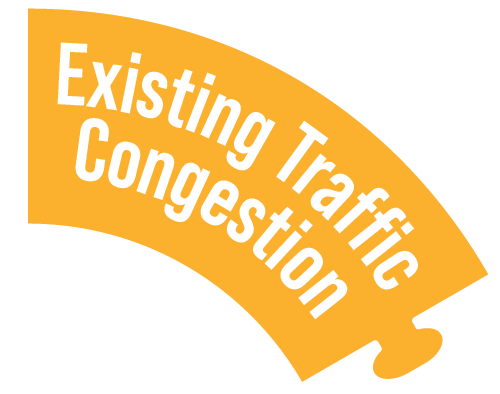
Traffic Performance

Social Need

- Housing + Transportation Costs as percent of income
Social Demographics
- Poverty ratio
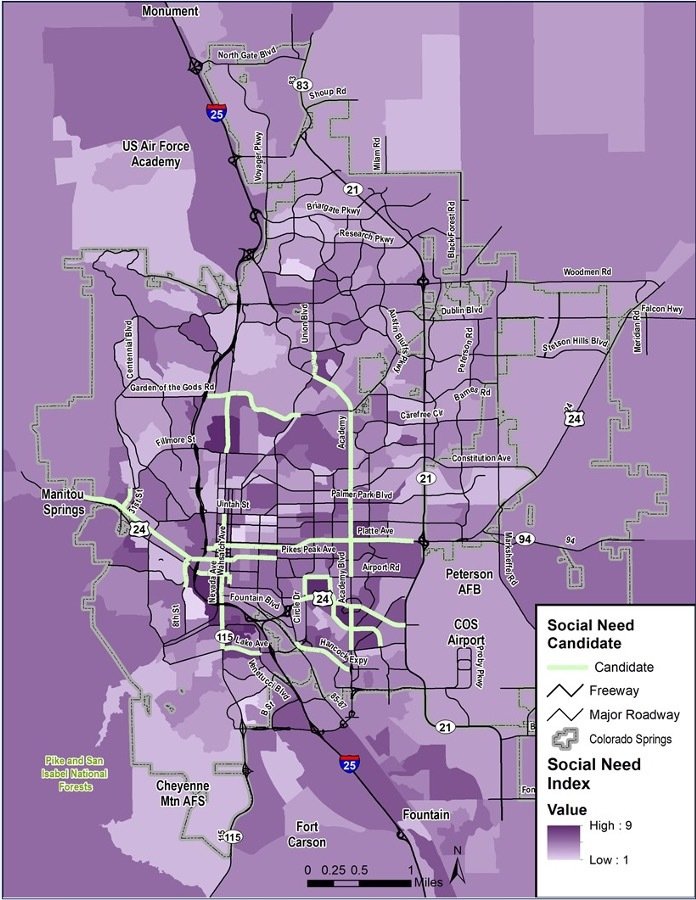

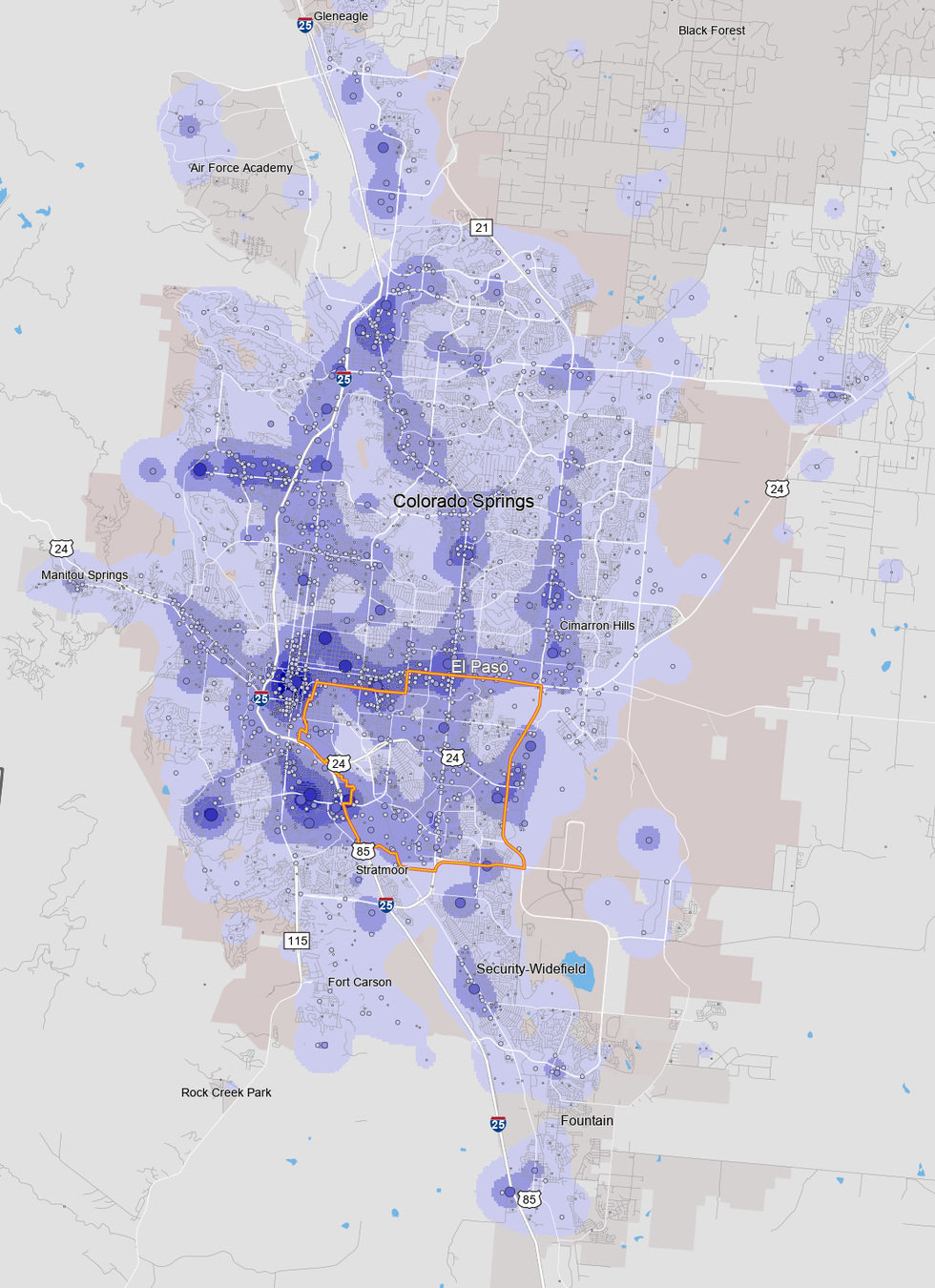
Existing Travel Patterns
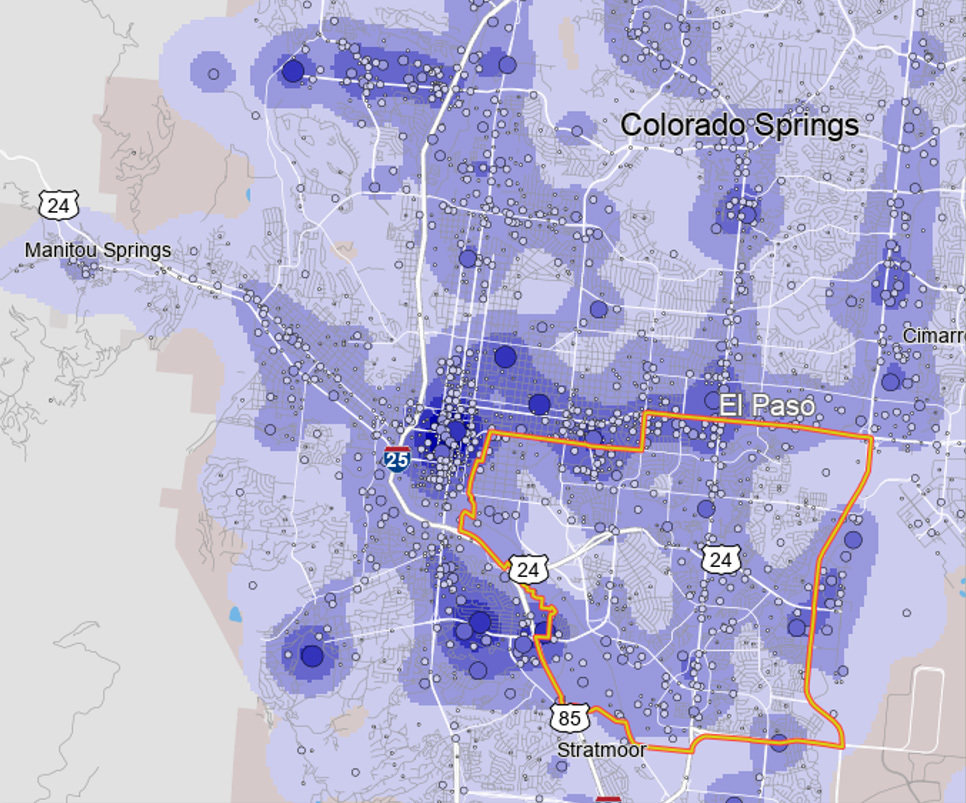
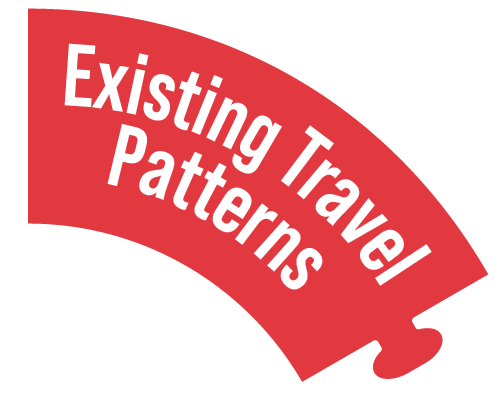
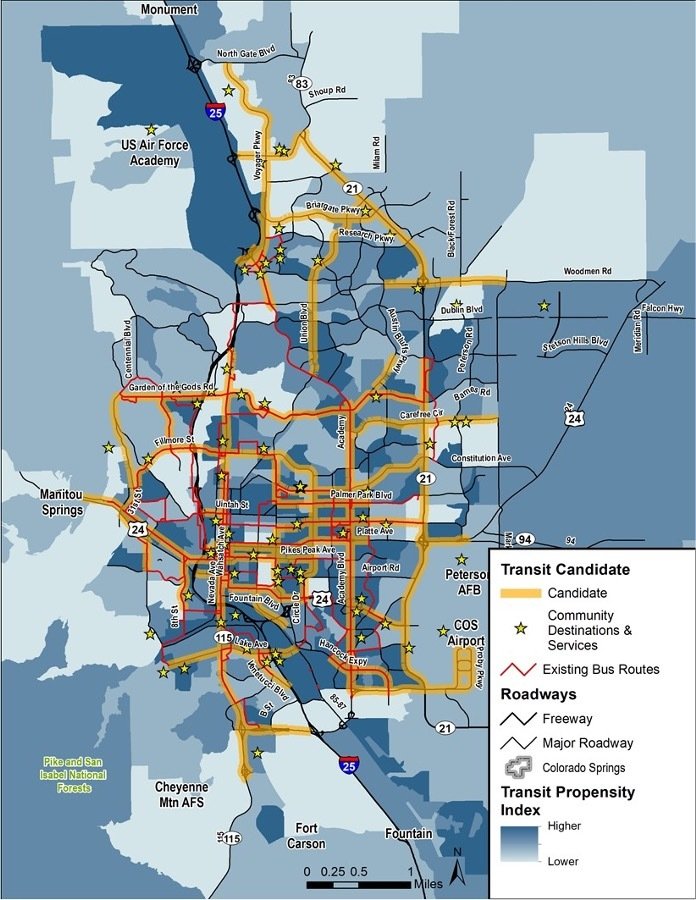
Travel Demand: Next Level Transit
- Age
- Ability
- Vehicle availability
Transit Propensity
- Population Density
- Key Community Services
- Mobility Need

Future Travel Demand
Likelihood for change (PlanCOS based)
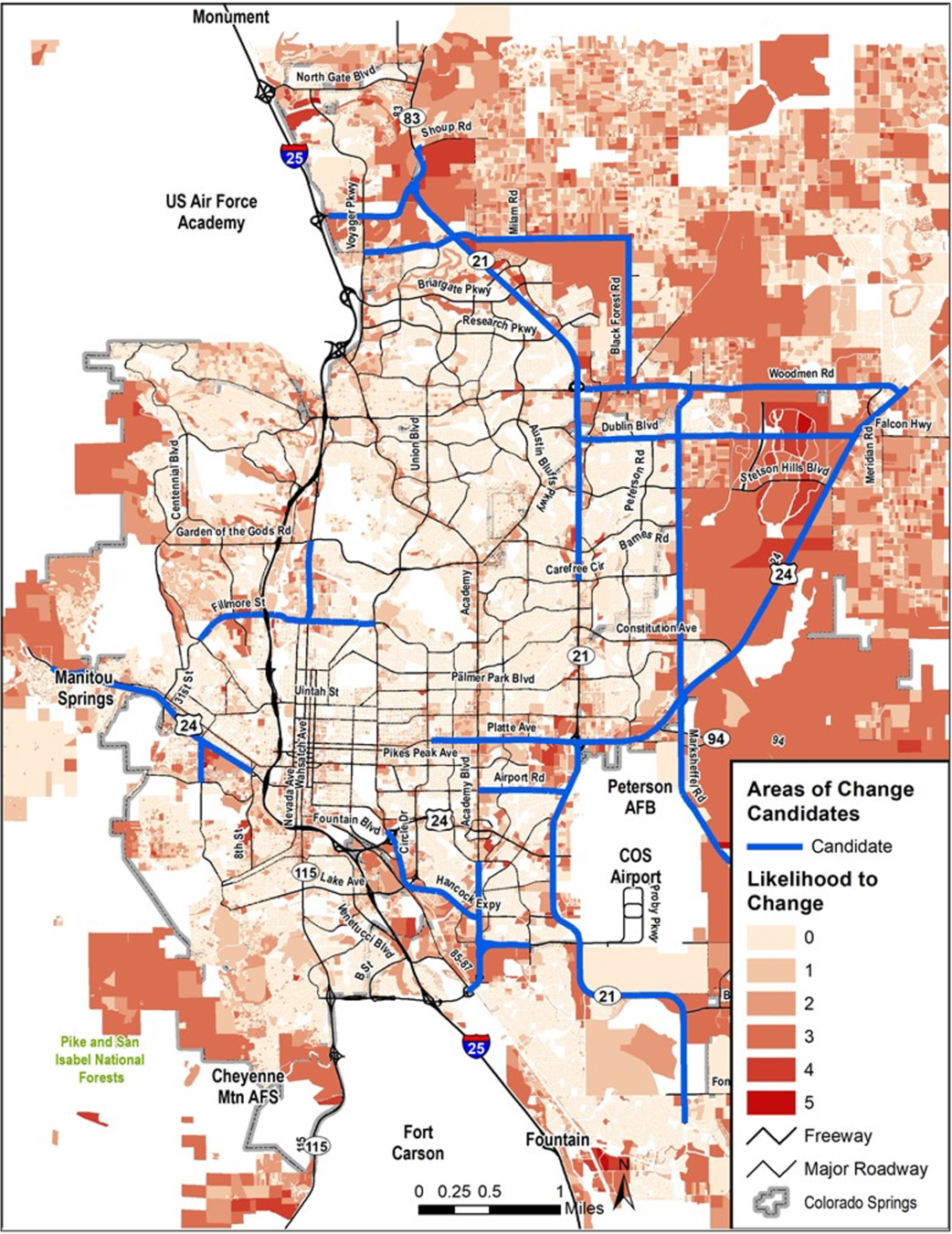

Critical Corridors
- The City’s primary travel corridors where improvements would be most beneficial
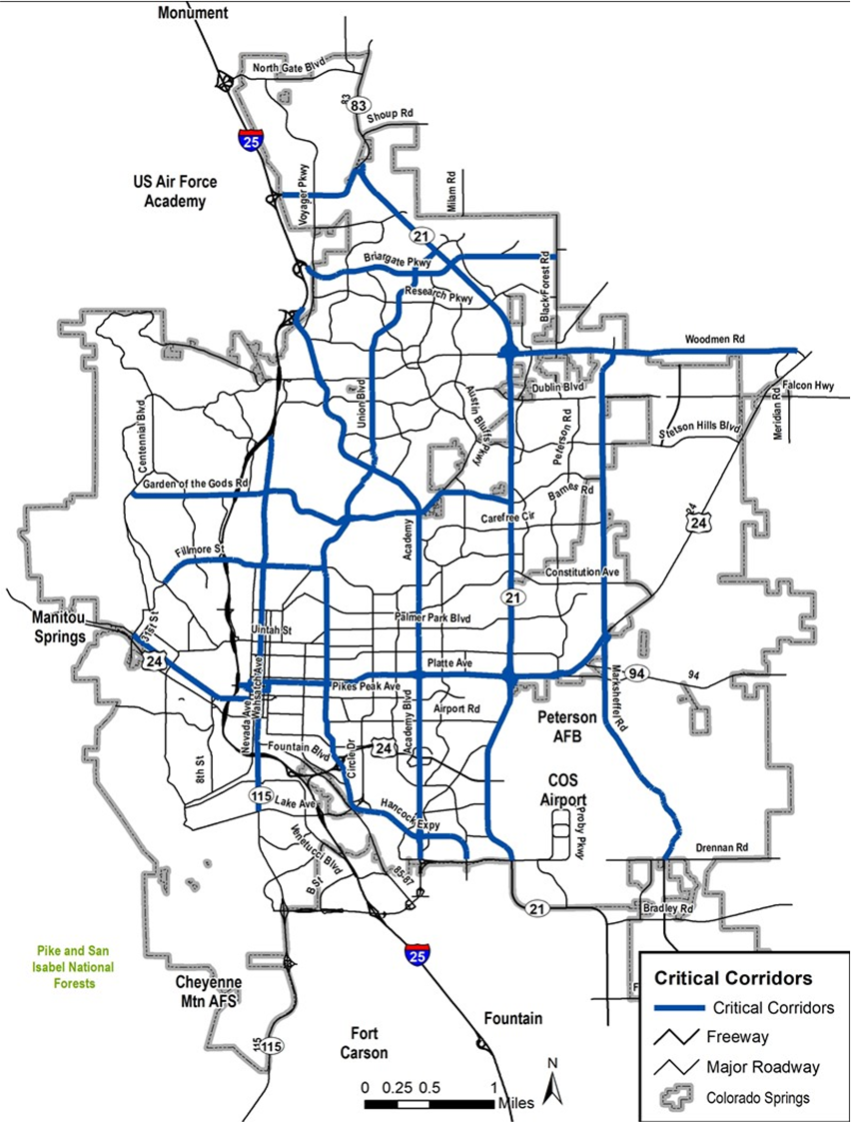

- Focus of more detailed evaluation and solution brainstorming
- ConnectCOS project list centers on these corridors
What is a Corridor?
- The area context and potential paths for travel that connect destinations
- Not just a named roadway

Project Development
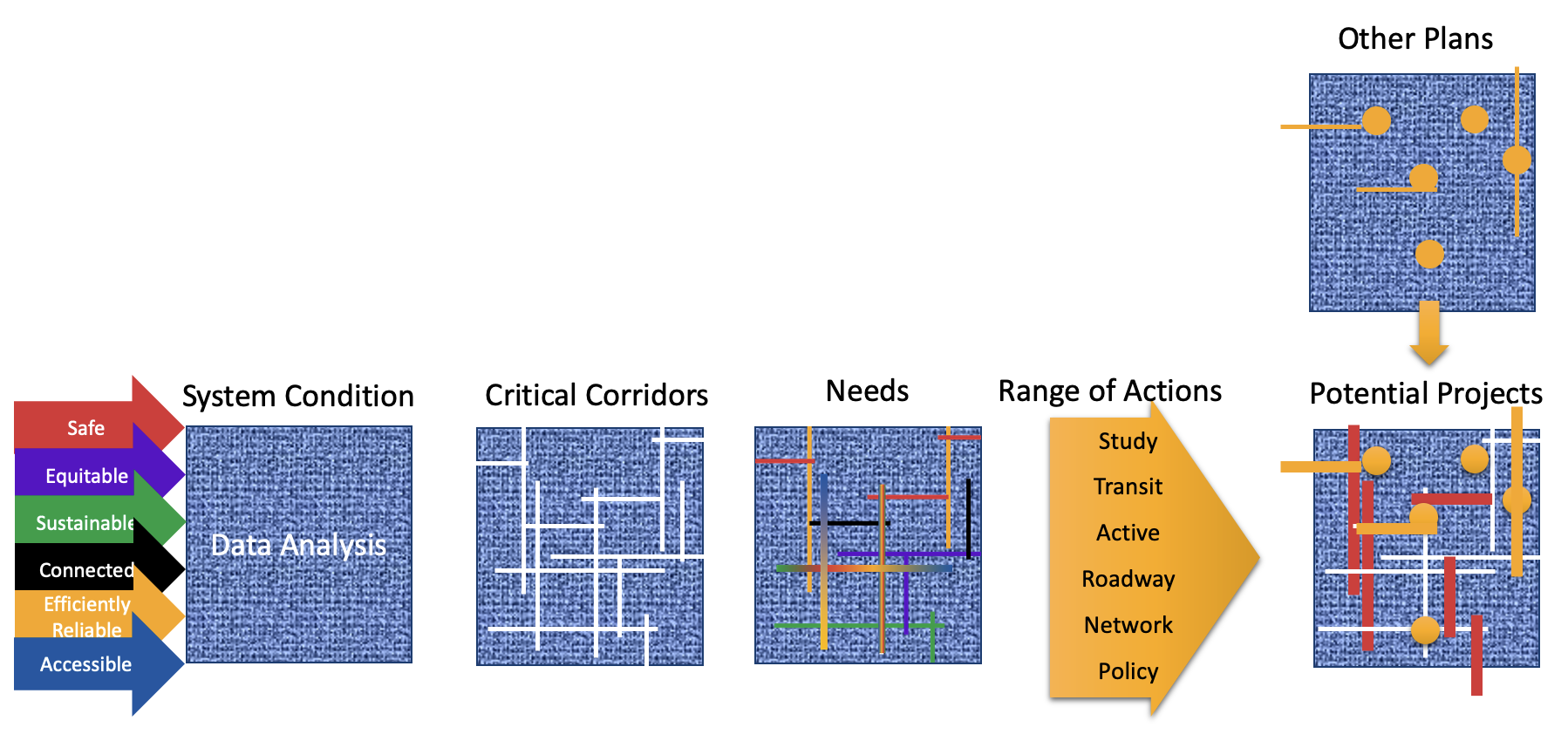
Regional Travel Demand
- Trips external to Pikes Peak Region
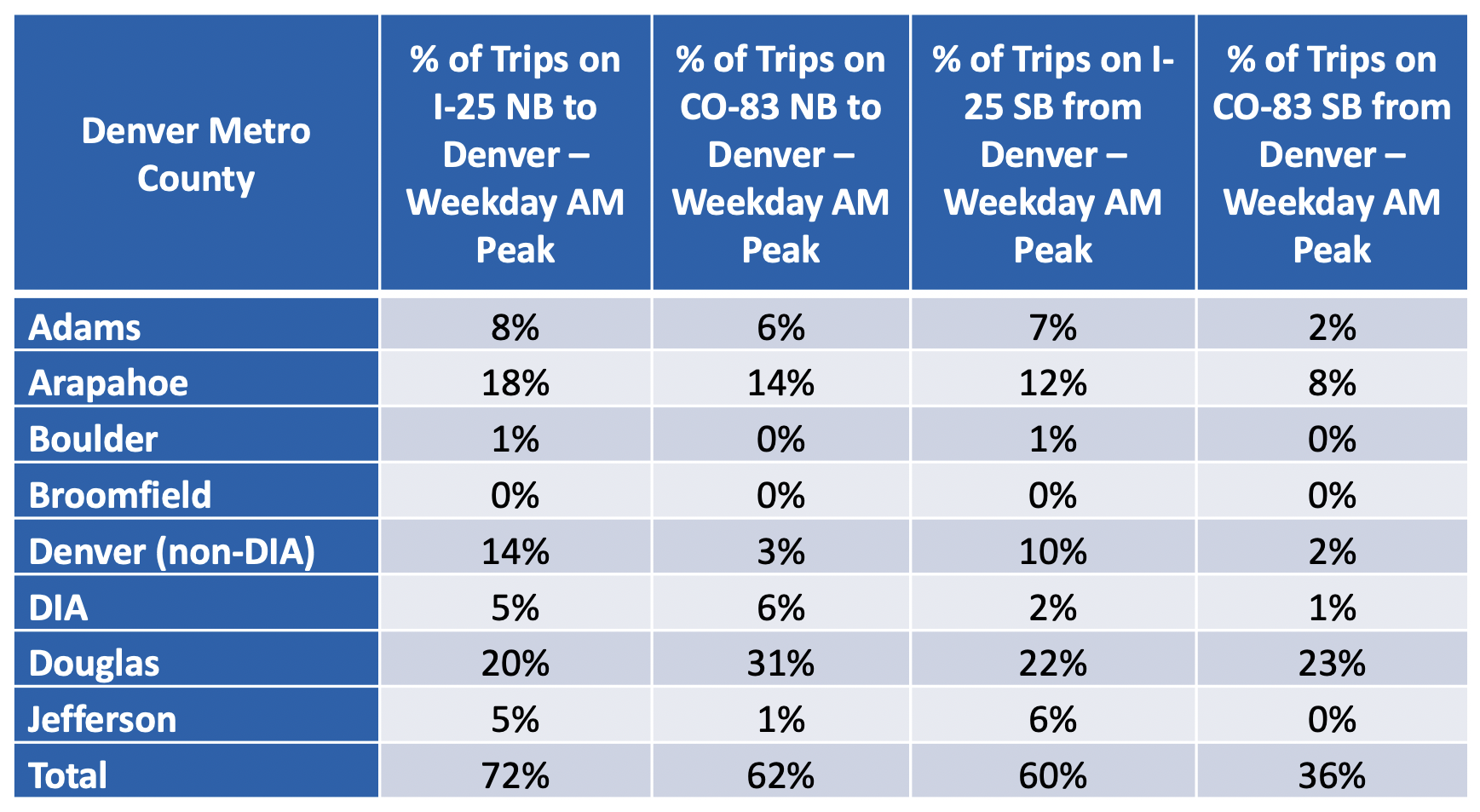
- Analysis of Specific Destinations (e.g. DIA)
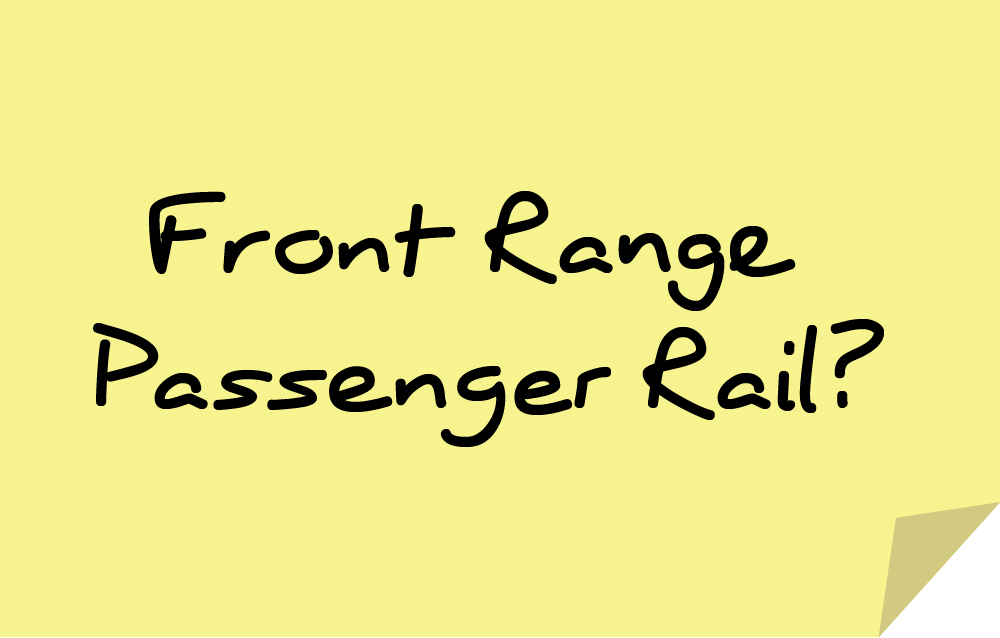
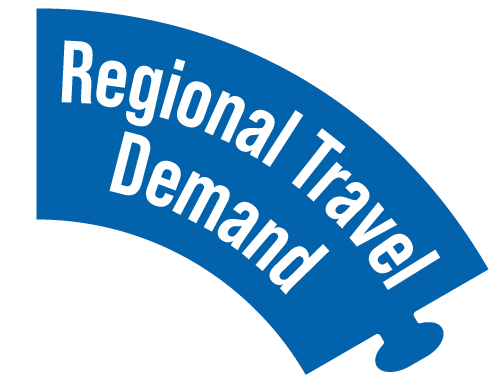
Transportation Investment Priorities
- Serve people
- Serve the community
- Resource stewardship
- Consistent with the goal framework and the themes of PlanCOS
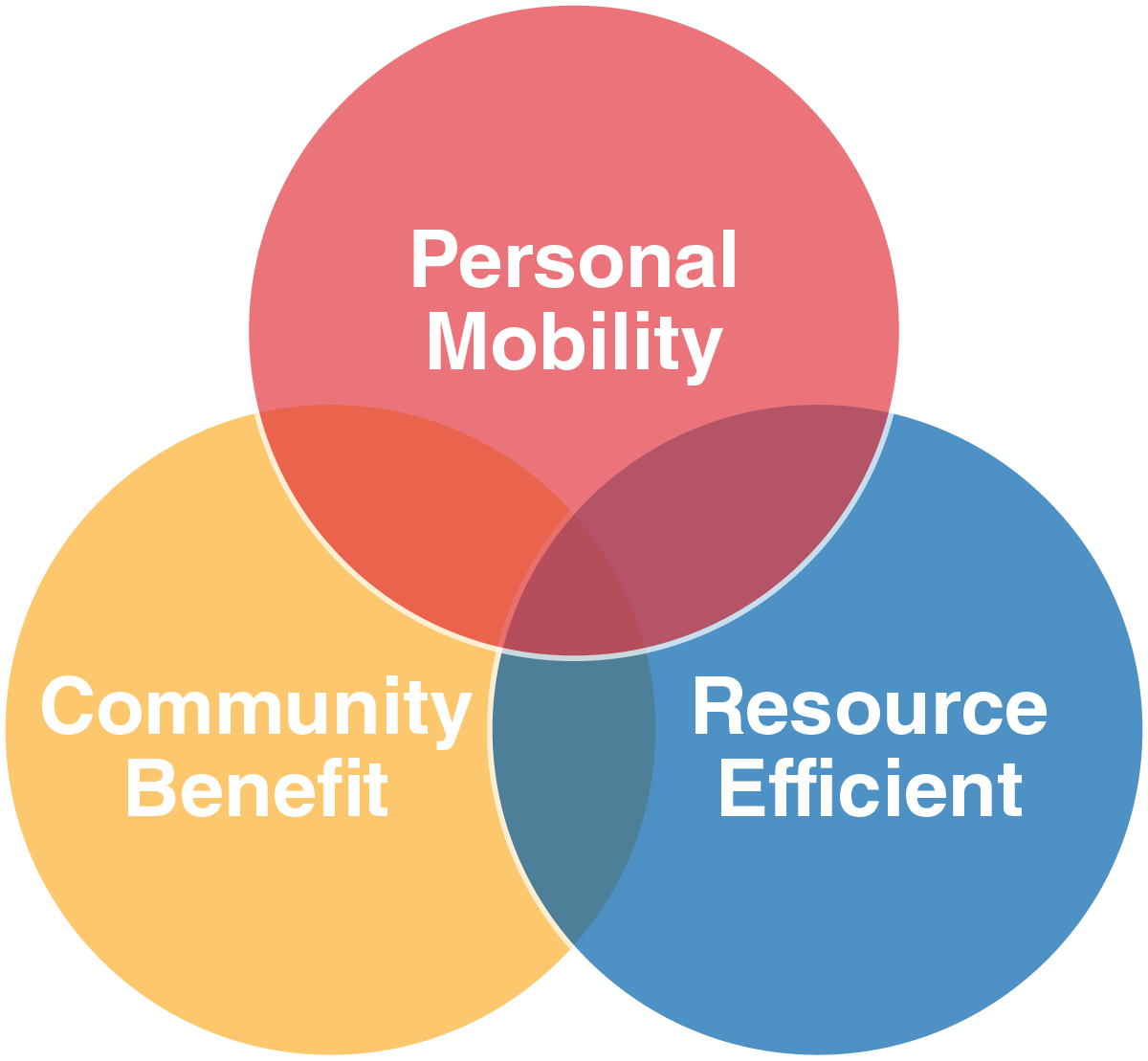

More Information


Integrated Planning Process

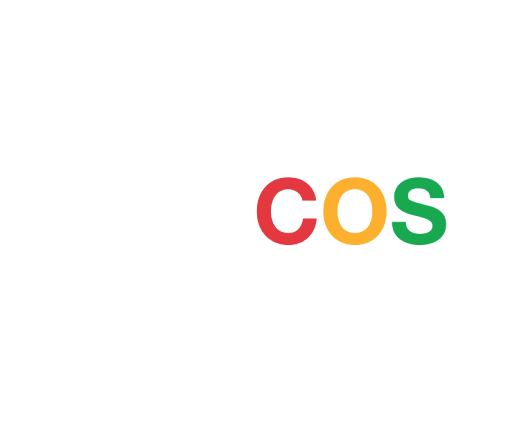


- Increases transparency
- Targets investments to meet goals
- Reduces “blind spots” created by familiarity
ConnectCOS Needs Identification
- Economic designations/desired investment
- Current/future traffic conditions
- Infrastructure condition – bridges, pavement, sidewalk/ADA
- Wayfinding
- Land use/transportation compatibility
- Crash concerns – bike/ped, intersections
- Personal safety – bike, ped, transit
- Need for mobility options
- Multimodal network gaps – sidewalks, transit access, crossings
- Land uses – affordable housing, retail options


ConnectCOS Needs Identification

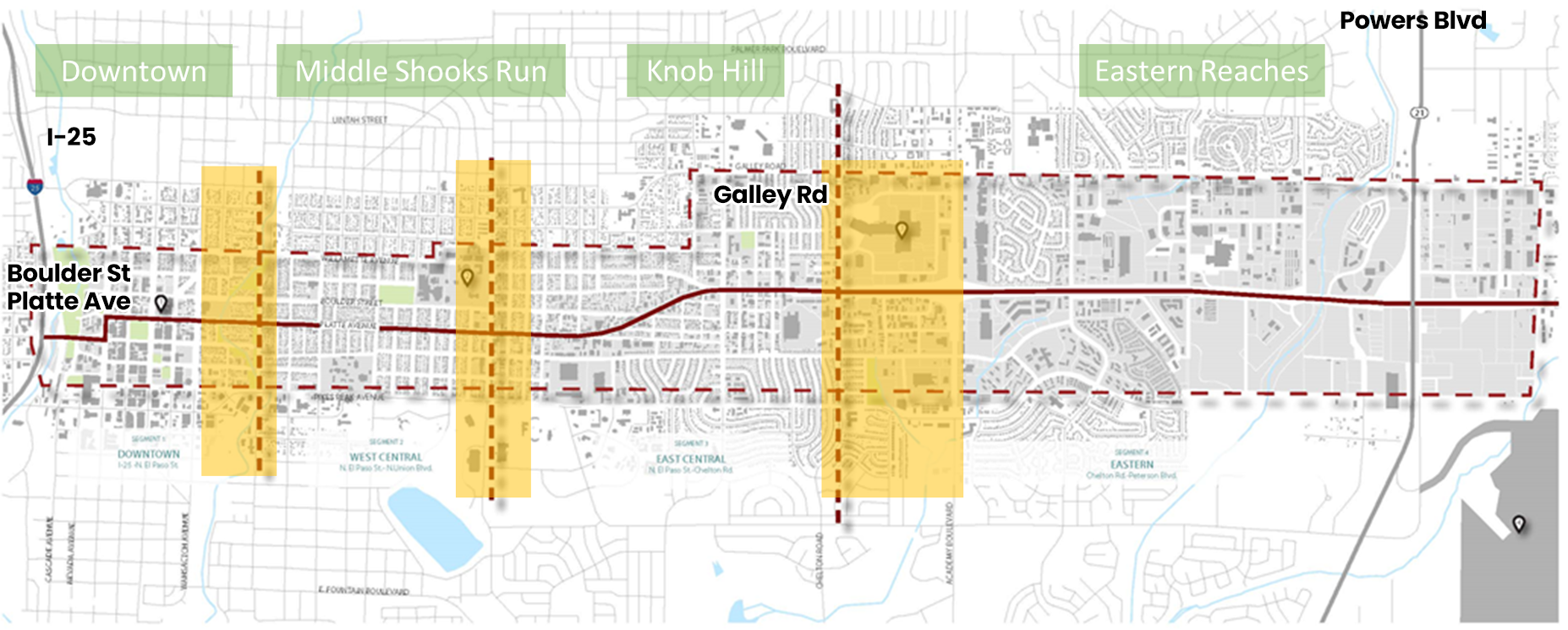
Functional Objectives
- Maintain and enhance east-west connectivity and capacity for current and future traffic as the primary function of the corridor, considering travel times, network connectivity, and activity centers served.


The Platte Avenue Corridor should…
- Support Downtown as a destination – while connectivity between I-25 and the eastern reaches is important, the character of the Downtown portion of the corridor should prioritize the vision for Downtown
- Establish a consistent identity for the corridor while integrating and enhancing the different character areas and the transitions between
- Integrate the corridor into the community to create an ‘Avenue’, visual connections, and context-specific placemaking opportunities
- Invest in the corridor to support the significant opportunity presented by Platte Ave to positively impact Citywide economic and equity outcomes
- Provide safe, efficient, and comfortable transportation options along and across the corridor to enhance mobility for those who drive, ride, walk, or roll
Developing Strategy Alternatives

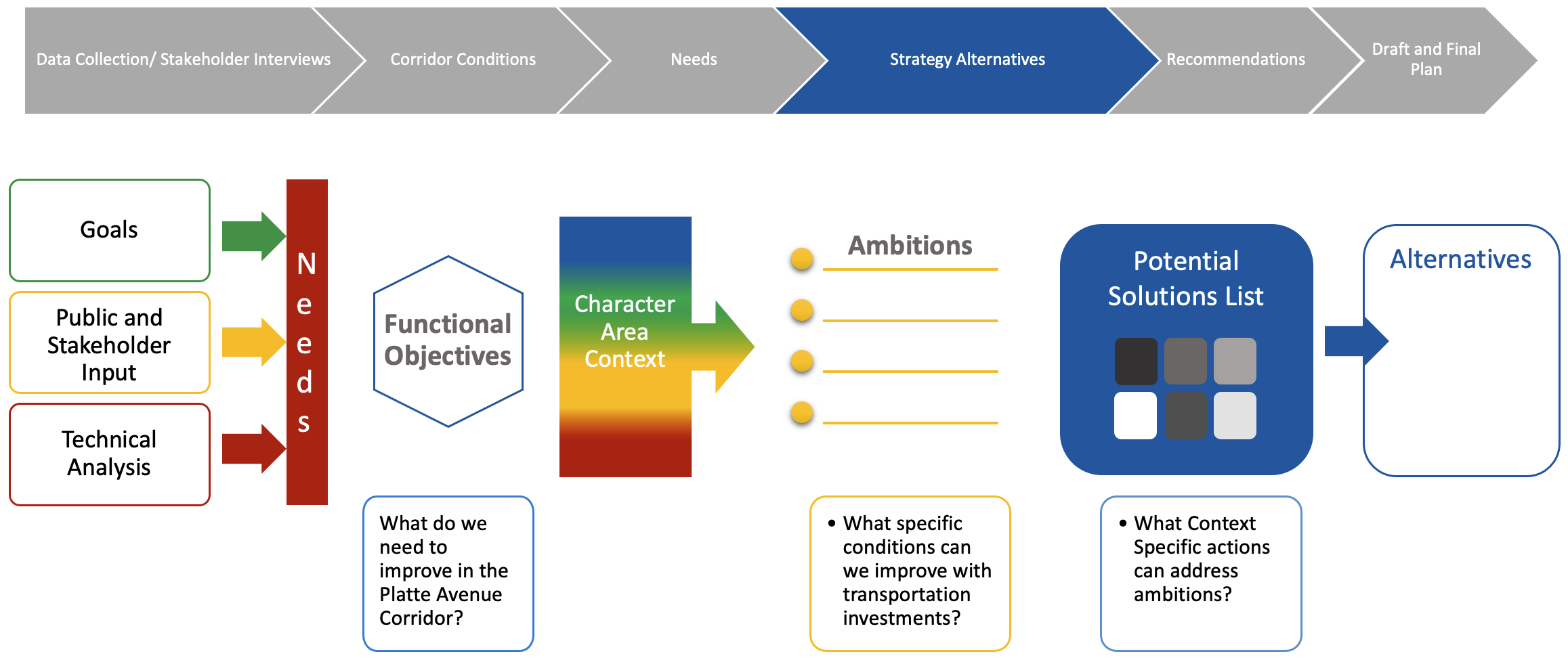
Potential Solutions
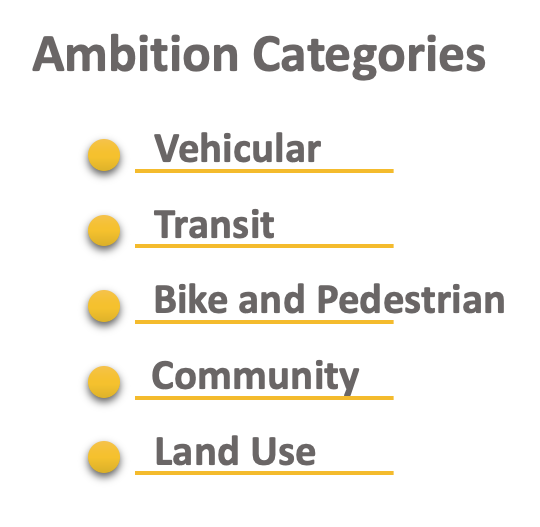


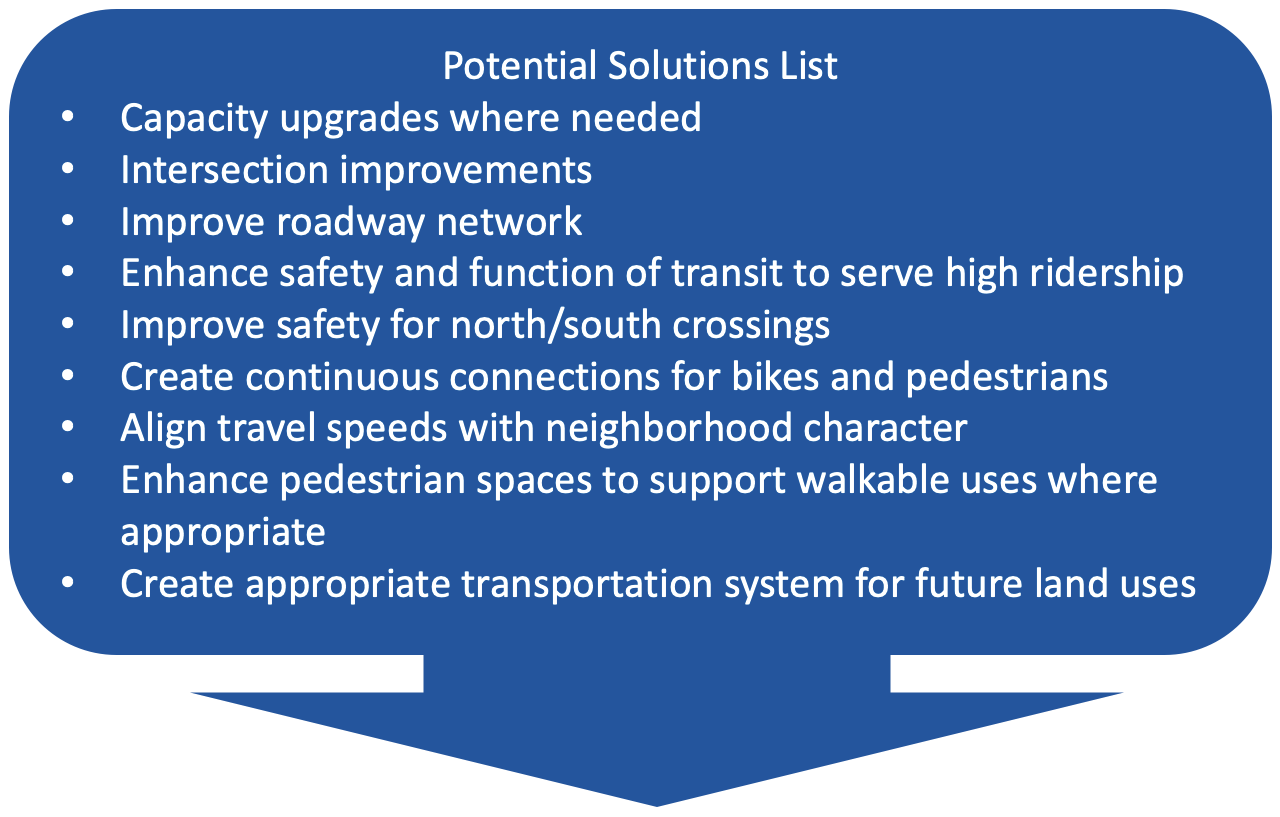
Alternatives Evaluation and Screening Process
